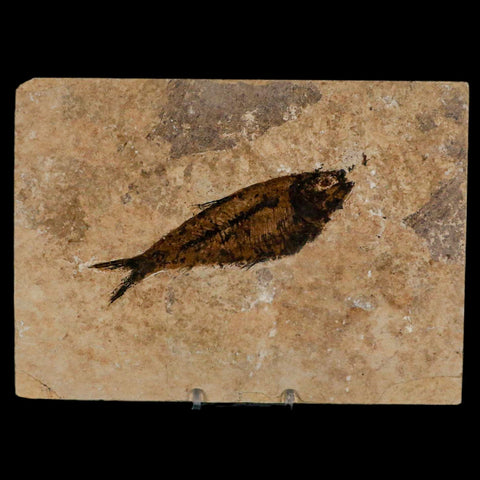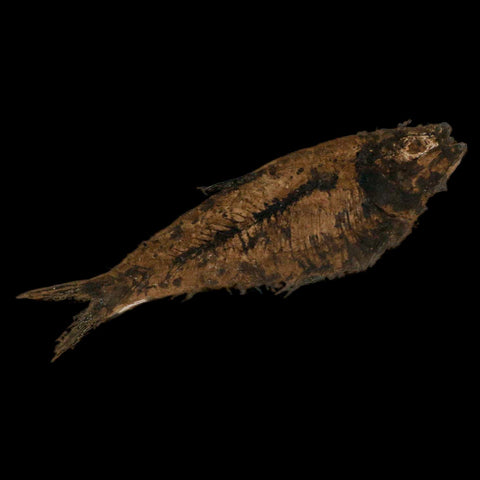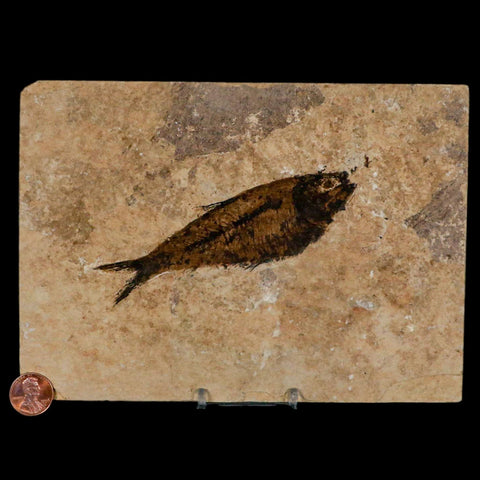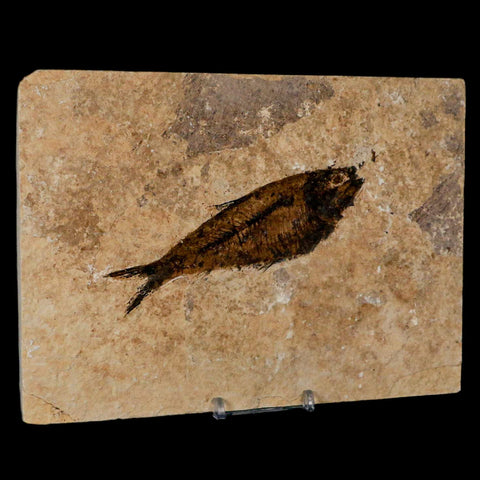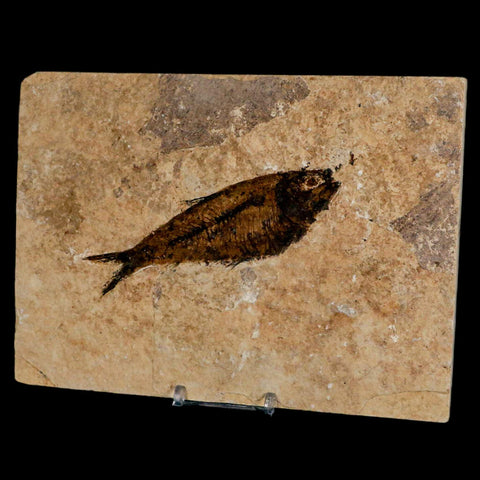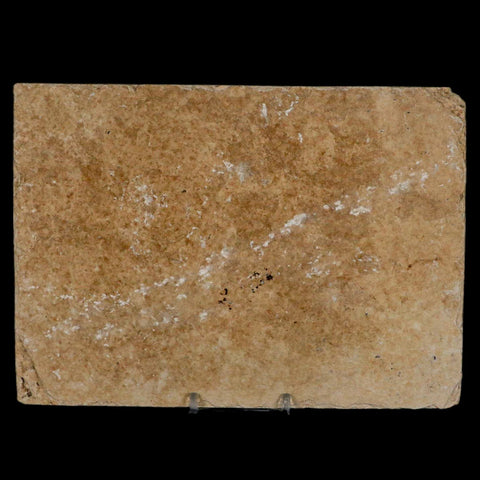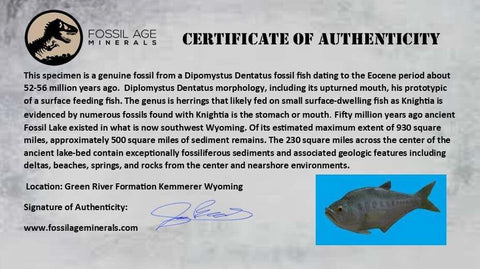XL 4.7" Diplomystus Dentatus Fossil Fish Green River FM WY Eocene Age COA, Stand
Location: Kemmerer, Wyoming
Weight: 1 Pound 3.3 Ounces
Dimensions: 7.2 Inches Long, 5.5 Inches Wide, 0.4 Inches Thick (Plate)
Fish Dimensions: 4.7 Inches Long, 1.4 Inches Wide
Comes with a Free Stand.
Comes with a Certificate of Authenticity.
The item pictured is the one you will receive.
This is a genuine fossil.
56 million years old, Eocene age.
The morphology of Diplomystus Dentatus, notably its upturned mouth, reflects its adaptation as a surface-feeding fish. This genus, closely related to herrings, likely preyed on small fish near the water's surface—a conclusion supported by numerous fossils revealing Knightia in the stomach contents. Approximately fifty million years ago, the ancient Fossil Lake existed in present-day southwest Wyoming, once covering an estimated 930 square miles. Currently, about 500 square miles of sediment remain, with 230 square miles of central lake-bed deposits exhibiting exceptional fossiliferous sedimentation and diverse geologic features such as deltas, beaches, and springs from nearshore to deep-water environments. The lake’s unique chemical conditions inhibited decomposition and scavenging, allowing for the gradual accumulation of finely laminated limestone layers. These laminated limestones represent the densest fossil fish deposits globally, providing an unparalleled Paleogene snapshot of a freshwater lacustrine ecosystem.
Since the discovery in the 1870s, many perfectly preserved fossil fish have been recovered. Preserved with the fish in the laminated limestone is a complete aquatic ecosystem: cyanobacteria, plants, insects, crustaceans (shrimp, crawfish, and ostracods), amphibians (frog and primitive salamander), alligators, turtles, birds, and mammals, including the oldest pantolestid (otter-like animal). The subtropical terrestrial ecosystem surrounding the lake is also represented by rare fossils, including a horse, two snakes, lizards, two bat species, birds, an apatemyid (an arboreal insectivore), a minced (a primitive carnivore), insects, and more than 325 types of leaves, seeds, and flowers.

Please be aware of the nature of fossils:
Being buried under the ground for millions of years under tons of pressure tends to be rough. No fossil comes out of the ground whole and perfect. Most fossils have undergone some restoration, while others are altered by man, simply to enhance their presentation in different ways. These are part of the natural beauty of the fossil and are not considered defects.


